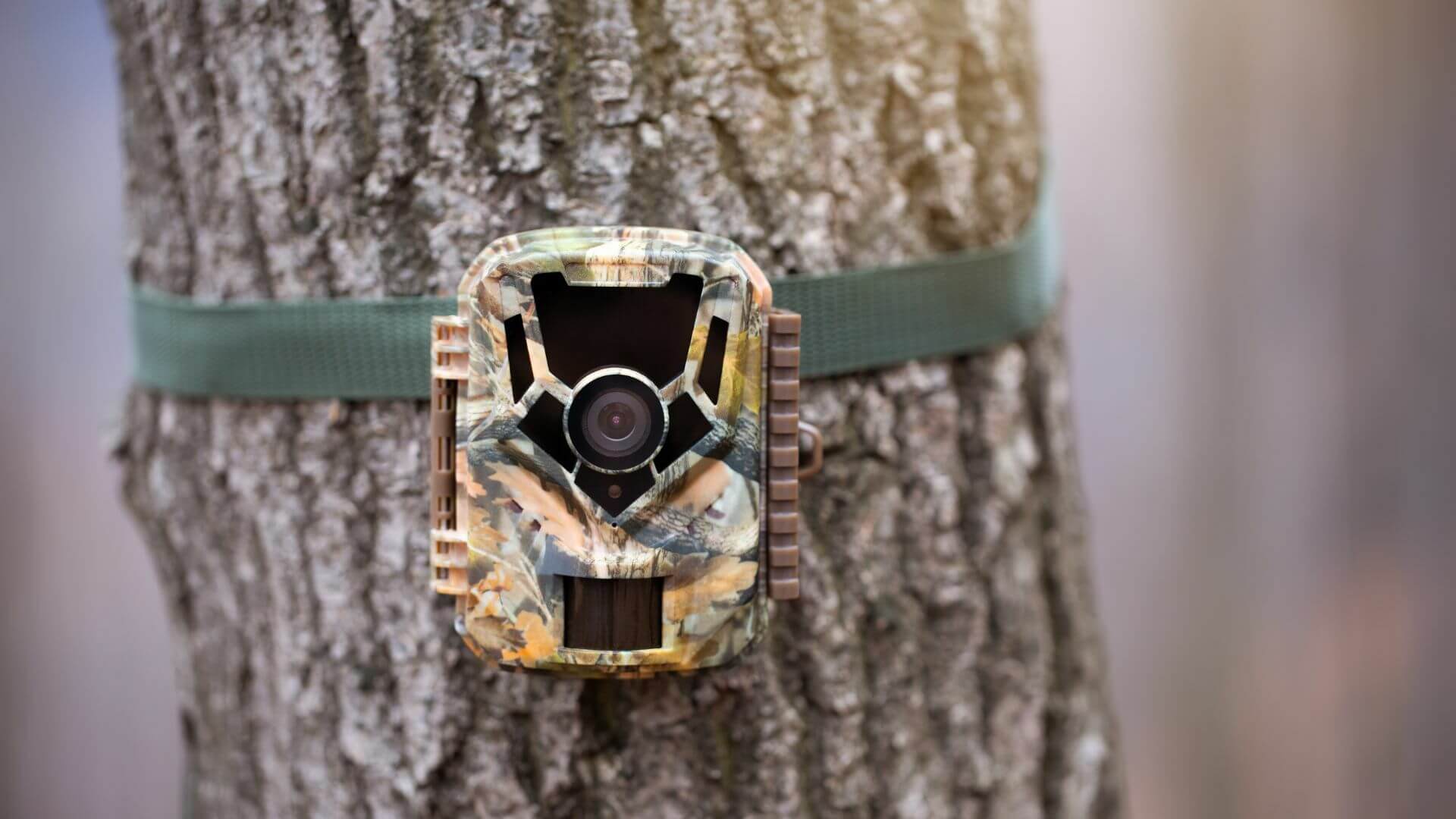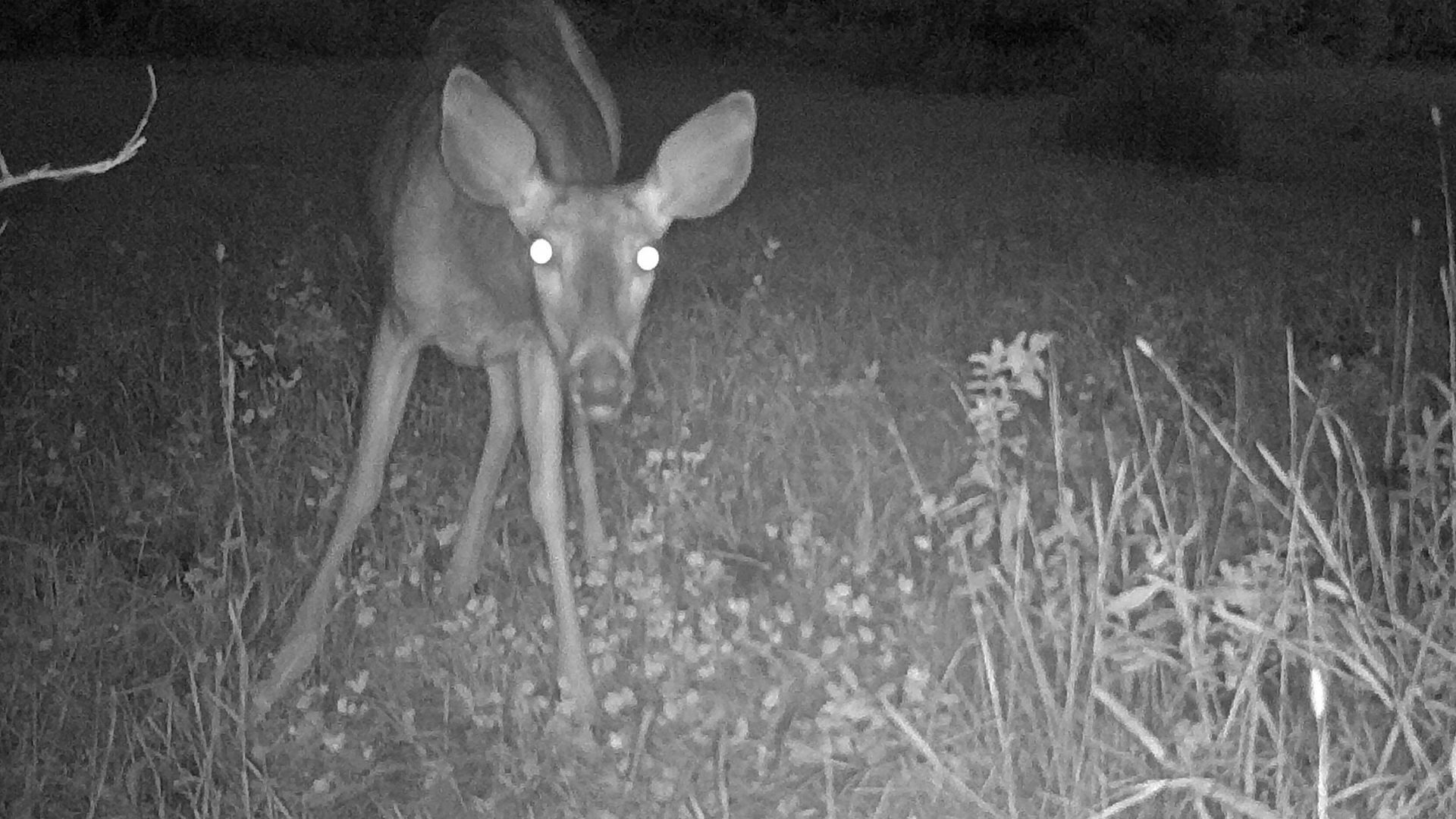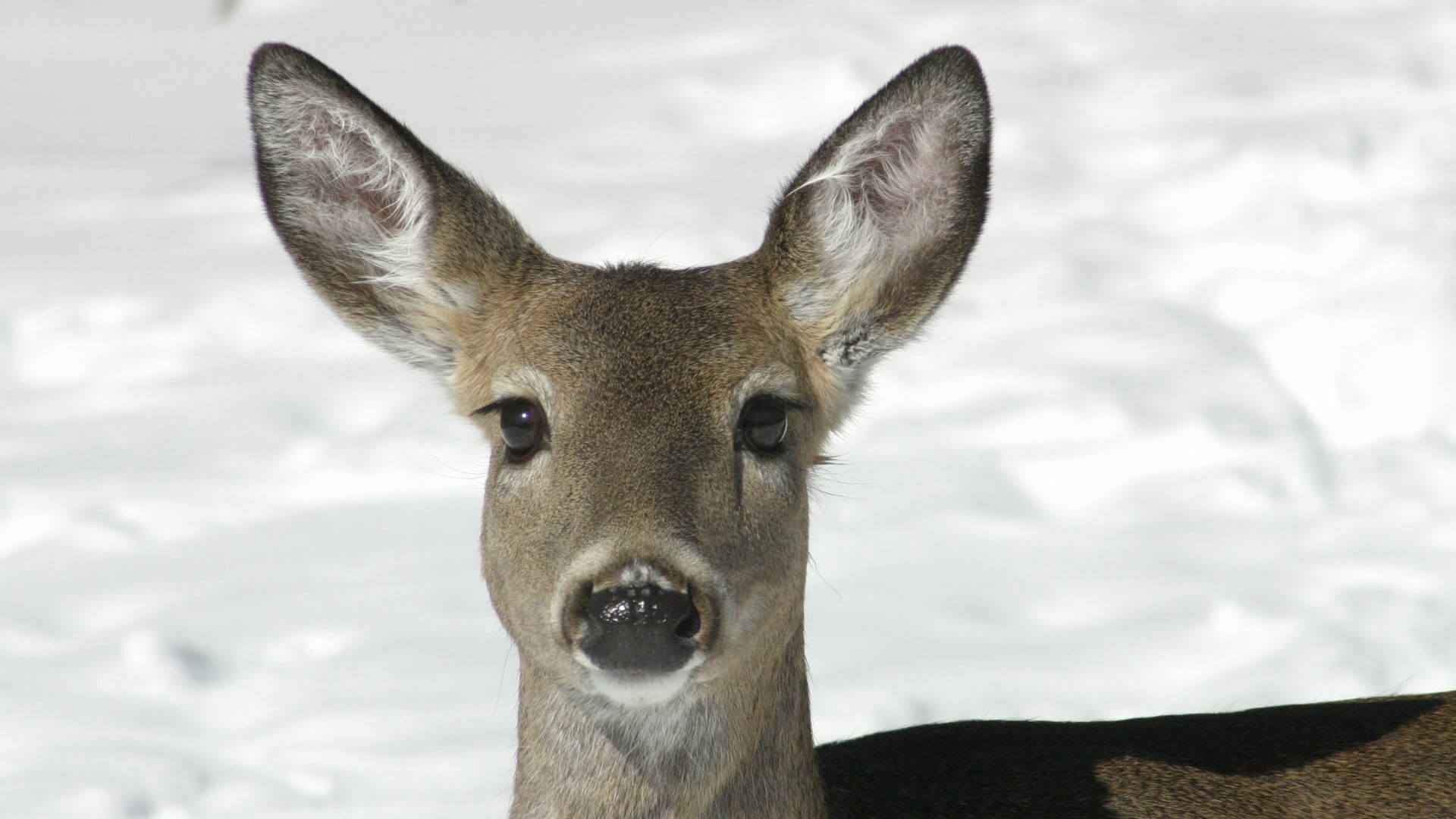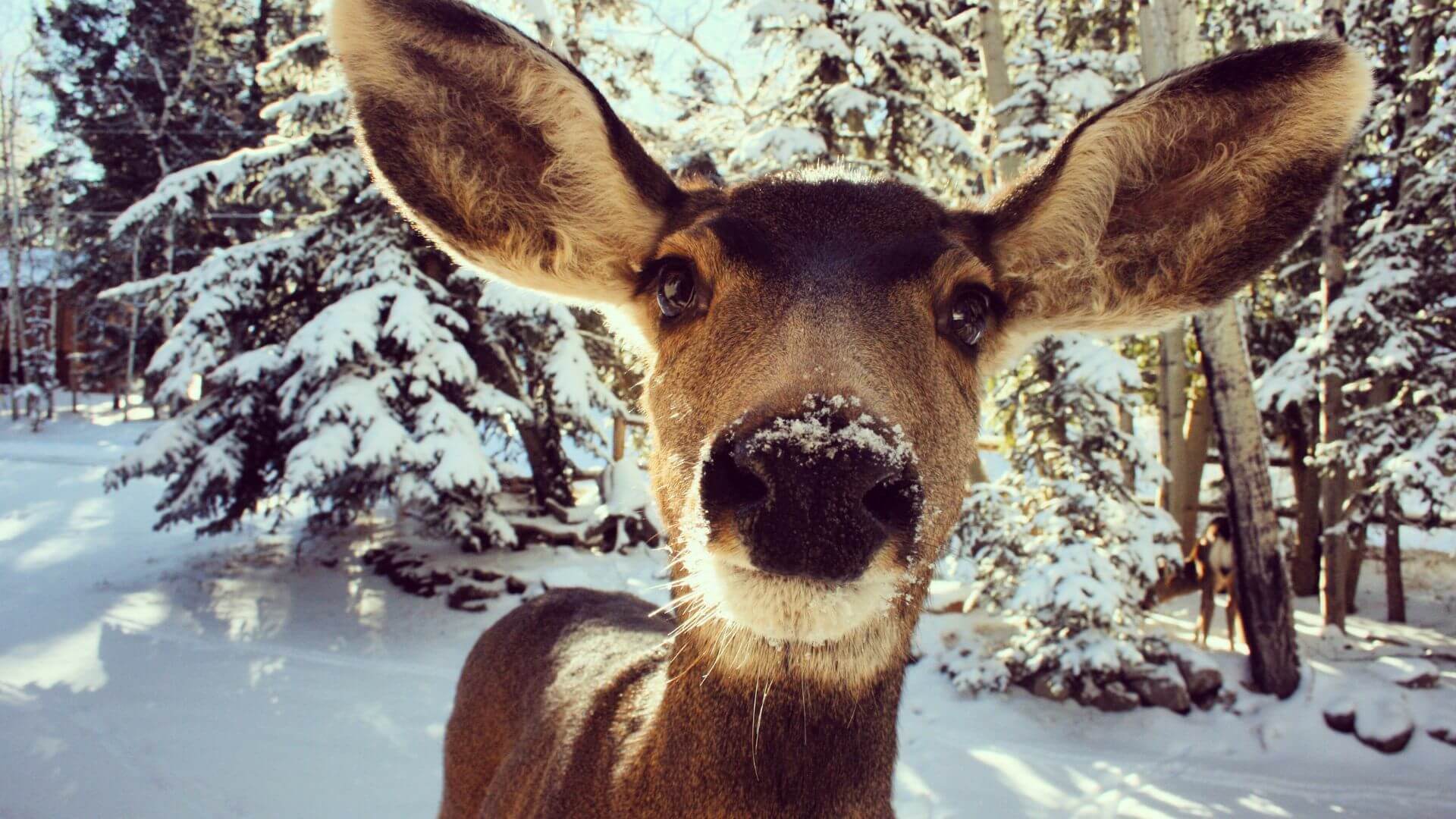Picture the final stretch of winter in Michigan: The sky lingers in a steel-gray hue, and the snow underfoot crunches like icy gravel. Dormant oaks stand tall, their leafless branches allowing you to see through the woods as though nature handed you a set of binoculars. Deer herds are transitioning from the harsh realities of survival mode—where energy conservation is critical—to the early stirrings of spring activity.
For landowners and property managers, these last weeks of winter aren’t just about waiting for the thaw; they’re about late winter scouting—a golden opportunity to glean priceless information on Michigan deer movement patterns before spring bursts onto the scene.
Think of your trail camera as a deer’s winter diary. Every photo tells a story of nighttime feeding, daytime bedding, and the corridors that Michigan whitetails traverse under the cloak of cold weather. By leveraging trail cameras for habitat management, you can gather targeted intel on which deer made it through the hunting season, where they prefer to bed, and how they navigate the changing landscape.
This data becomes the bedrock for spring habitat upgrades—helping you plan your food plots, manage timber, and optimize deer movement on your property for the season ahead.
1. Why Late Winter Is Michigan’s Secret Scouting Season
![]() How Does Winter Weather Affect Deer Behavior?
How Does Winter Weather Affect Deer Behavior?
Michigan’s winter months can be relentless. According to Michigan DNR data, winter severity plays a significant role in deer survival rates, especially in the Upper Peninsula (U.P.), where snowfall can be measured in feet rather than inches. As food sources become scarce and temperatures plummet, deer often “yard up”—forming groups to navigate deep snow more efficiently and conserve energy. Post-rut, bucks focus on recovery, searching for high-fat, high-carbohydrate food sources to rebuild body mass.
Why Scout Now?
So, why is late winter scouting the sweet spot? For one, reduced foliage provides clearer sightlines, making it easier to interpret trails and bedding areas. Snowmelt patterns begin to reveal the low-lying zones that will hold moisture well into spring. By tracking where snow melts first and where it lingers, you can predict how deer will transition as new growth emerges. Late winter also ensures you’re documenting deer at a critical juncture—after the season’s pressure but before spring dispersal. This vantage point helps you shape your property’s habitat management strategies with laser-focused precision.
2. Choosing the Right Trail Cameras for Michigan Winters
 When it comes to trail cameras for habitat management, not all models are created equal—especially when you factor in Michigan’s unpredictable weather. Here’s a quick list to help you choose gear built to handle the cold.
When it comes to trail cameras for habitat management, not all models are created equal—especially when you factor in Michigan’s unpredictable weather. Here’s a quick list to help you choose gear built to handle the cold.
Opt for Cold-Weather Battery Solutions
Lithium vs. Alkaline: Lithium batteries perform better in low temperatures, providing longer life and more consistent voltage. In the U.P., where subzero nights are common, lithium batteries can be the difference between capturing critical deer activity and missing out entirely.
Lens Heaters and Fog Prevention
Many premium trail cameras come with built-in features like lens heaters or fog-resistant coatings. These help keep your camera functioning and your images clear during sudden Michigan temperature drops or heavy condensation.
Camouflage for the Gray-Brown Winter Palette
Our winter woods often transition to a mix of gray skies and bare branches. A camera wrapped in real-tree or bark-style camouflage helps it blend seamlessly, minimizing the chance of spooking deer or attracting unwanted attention from passersby.
U.P. vs. Lower Peninsula Favorites
U.P. hunters often recommend rugged cameras with extra insulation and advanced night-vision capabilities, while Lower Peninsula hunters might opt for slightly less expensive models with moderate cold-weather ratings, given that winter temperatures (although still cold) are somewhat milder.
3. Late Winter Scouting: Strategic Camera Placement—from Bedding Areas to Food Sources
 Setting up cameras isn’t just about slapping them on trees. Think of your placement strategy as a step-by-step guide that follows Michigan deer movement patterns during the late winter months.
Setting up cameras isn’t just about slapping them on trees. Think of your placement strategy as a step-by-step guide that follows Michigan deer movement patterns during the late winter months.
Step 1: Identify Prime Winter Bedding Areas
Look for cedar swamps or south-facing slopes where deer bed to maximize sunlight and minimize cold exposure. In deep-snow regions, conifer stands offer thermal cover, helping deer conserve energy. Focus your cameras on trails leading into these dense cover zones.
Step 2: Find Remaining Food Sources
Hard mast remnants like acorns can linger beneath leaf litter, and standing cornfields or winter wheat in agricultural areas may still attract deer. Mount cameras where you see sign of foraging—tracks, droppings, or nibbled stalks.
Step 3: Connect the Dots with Transition Corridors
Deer usually travel along ridgelines, creek bottoms, or edges of standing timber. These corridors become highways linking bedding to food. Strategically place cameras along funnels or pinch points—think narrow strips of cover between open fields—to capture consistent traffic.
Step 4: Scent-Free Mounting Techniques
Your presence can disrupt deer patterns. Use gloves when handling cameras, consider using scent-eliminating sprays, and mount cameras at an angle that minimizes direct interference. In many cases, placing cameras higher and angling them downward provides a wider field of view and reduces the likelihood of spooking deer.
Visual Aid Tip: Imagine an annotated map of a 40-acre Michigan property. Mark cedar swamps in one corner for winter bedding, a stand of red oaks along a ridge for residual acorns, and a small creek running between them. Place trail cameras at the junctions of these habitat features for maximum coverage.
4. Interpreting Data: Turning Winter Photos into Spring Action
 Let’s walk through a real-world scenario—a case study from a Gratiot County property—to see how late winter footage becomes actionable insights.
Let’s walk through a real-world scenario—a case study from a Gratiot County property—to see how late winter footage becomes actionable insights.
Identifying Deer Traffic Patterns
Photos reveal a consistent morning movement from a cedar thicket to a sheltered food plot that includes leftover turnips and brassicas. This indicates deer are relying heavily on accessible winter forage. Come spring, you might decide to expand or relocate this food plot to a more central area, ensuring deer have easy access to new growth (e.g., clover or chicory blends).
Assessing Buck-to-Doe Ratios
Let’s say your trail cam logs show a 1:3 buck-to-doe ratio. If that’s more doe-heavy than you’d like, you can plan to adjust your harvest strategy next season or enhance your habitat to support a more balanced herd. Spring is the perfect time to plant high-nutrient forage, improving overall herd health.
Noting Predator Sightings
Winter cameras can also capture images of coyotes or bobcats. If you see frequent predator activity near bedding areas, it may be time for better coyote management—particularly when fawns begin to drop. Consult with local wildlife biologists or your Michigan DNR office for recommended control measures.
By analyzing your late winter camera roll, you gain a roadmap for spring habitat upgrades that can boost your property’s holding capacity, improve the quality of forage, and keep deer moving where you want them.
5. Common Mistakes (And How to Avoid Them)
Myth #1: “Set It and Forget It”
Reality: Michigan’s weather can shift drastically, and snowfall can obscure your lens, bury your camera, or change deer movement patterns. Regular (though not overly frequent) check-ins ensure your cameras continue capturing accurate data.
Myth #2: “Nighttime Temperature Drops Don’t Affect Activity”
Reality: In subzero conditions, deer may move earlier in the evening or later in the morning to avoid extreme cold. If your camera’s nighttime settings are off—or your batteries can’t handle the cold—you may miss crucial movement data.
Myth #3: “Empty Footage Means No Deer”
Reality: If your cameras consistently capture empty frames, it might be that deer have shifted to a different yarding area—or your camera angle is too high or too low. Double-check alignment and track fresh signs (tracks, droppings, rubs) to confirm if the deer have relocated.
6. Preparing for Spring: Habitat Upgrades Based on Your Findings
Once the snow melts and your trail camera data is sorted, it’s time to take action. Late winter scouting helps you plan projects that will pay off all year long.
Timing Prescribed Burns for Oak Savanna Restoration
In some parts of Michigan, controlled burns are essential for maintaining oak savannas and promoting native grasses. Using your winter intel, you can strategically plan burns in areas less frequented by wintering deer to minimize stress on the herd.
Selecting Michigan-Specific Seed Mixes
Based on your camera data, identify the food plot strategies that work best for your property. For example, if brassicas thrived during the cold months, you might consider a Michigan-specific clover/chicory blend for early spring and summer nutrition.
Leverage NRCS Cost-Share Programs
The Natural Resources Conservation Service (NRCS) offers financial assistance for certain habitat improvements. Whether you’re looking to plant pollinator-friendly buffer strips or improve forest stand health, your late winter scouting data provides a compelling case for where the funds can have the most impact.
Michigan-Specific Checklist: 5 Late Winter Scouting Tasks to Complete by March 1
- Check Camera SD Cards: Swap them out or review footage to ensure consistent monitoring.
- Map Ice-Free Water Sources: As snow melts, note which creeks or ponds thaw first—key hydration zones attract early spring deer traffic.
- Inspect Trails for New Sign: Fresh tracks or droppings could indicate late-season changes in patterns.
- Finalize Seed Orders: Secure your clover, chicory, or other wildlife-friendly seeds before spring planting rush.
- Connect with Local Experts: Touch base with your county’s NRCS or Michigan State University Extension office for habitat advice.
Conclusion:
Late winter in Michigan’s woods is far from a downtime—it’s your secret window for late winter scouting that can shape your entire hunting season. By placing cameras strategically near winter bedding areas, transition corridors, and remnant food sources, you’ll gather intel that becomes the backbone of your spring habitat upgrades. Whether it’s shifting your food plots, managing predators, or collaborating with conservation programs, the insights gained now will pay dividends once the snow recedes and green shoots take over.
Remember, in these quiet winter woods, your cameras are working around the clock, chronicling the real-time story of the deer on your property. By studying these patterns—and applying Pure Michigan grit—your spring habitat improvements can propel your property to new heights. Plan wisely, consult local experts, and let your winter camera footage guide you toward a banner hunting season next fall.
 How Does Winter Weather Affect Deer Behavior?
How Does Winter Weather Affect Deer Behavior?